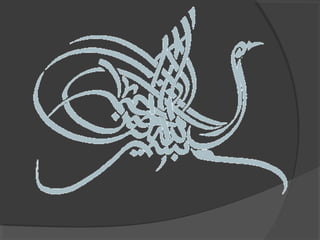
History of Dentistry: From Ancient Times to Modern Advancements
- 3. Dentistry: Is a healing art and science that is concerned with the teeth, oral cavity, and associated structures. Dentist: One whose profession is to treat diseases and injuries of the teeth and oral cavity and to construct and insert restorations of and for the teeth, jaws, and mouth.
- 5. History of DentistryHistory of Dentistry
- 6. The earliest history of treating tooth related problems goes all the way back to 7000 BC, The first method of treatment was bow drills, which were ancient primitive tools used for wood working and treating tooth problems. Moving forward into 5000 BC, the Sumerians blamed tooth worms as the cause of any dental issues, with the worms boring little holes in your teeth and hiding out inside. The idea that a worm traveled through your mouth and was the cause of dental pain lasted until it was proven false in the 1700s
- 7. In ancient Greece, Hippocrates and Aristotle wrote about treating decayed teeth as well as having teeth extracted to keep mouth pain away. Interestingly enough, the professionals who were doing these extractions during the middle ages were not medical authorities, but barbers. These partially trained hair cutters began using a “Dental Pelican” in the 14th century and then a “Dental Key” to extract teeth from their patients’ mouths.
- 8. The man behind the science was 17th century French Physician, Pierre Fauchard. He is called “The Father of Modern Dentistry”, and he was the brains behind many of the procedures still used in today’s society. For instance, he was the man behind the thought process for dental fillings, and he also helped to explain that acids from sugar are a major source of tooth decay. From here, the rest is history. In 1840, the first dental college was opened, called the Baltimore College of Dental Surgery. This led to more government oversight, and eventually regulation through the American Dental Association (ADA).
- 9. In 1873, Colgate mass-produced the first toothpaste in a jar, and, just a few years later, in 1885 the first tooth brush was mass produced in America. The first real electric toothbrush was produced in 1939, but it was developed in Switzerland.
- 10. D. or Dr.: Doctor. D.D.S.: Doctor of Dental Science; Doctor of Dental Surgery. B.D.S.: Bachelor of Dental Surgery. G.P.: General Practitioner: licensed dentist who performs all types of dental treatment. M.D.S.: Master of Dental Surgery. Ph.D.: Philosophiae Doctor.
- 12. Endodontics.
- 14. Orthodontics.
- 15. Pedodontics (Pediatric Dentistry).
- 17. Oral Surgery.
- 19. Oral Pathology. Dental Material. Prevention. Implantology. Dental Forensic Medicine. Geriatric Dentistry.
- 20. Teeth are more than projections in the mouth that allow you to grind the food and prepare it for the initial phase of digestive process. Teeth are one of the most important elements of the masticatory system. Man supplied through his life by two sets of teeth, a deciduous or primary set, and followed by a permanent set.
- 21. 1. Mastication: It is the most important function of the teeth. The teeth are designed to perform this function. 2. Appearance: Well clean teeth with proper alignment give nice appearance to the face and also support the facial expressions.
- 24. 3. Speech: The teeth are important for clear pronunciation and for production of sound. 4. Growth of jaws: The teeth play a role in the growth of the jaw in some periods.
- 25. natural teeth in position in the dental arches. • Primary dentition. • Mixed dentition. • Permanent dentition.
- 26. Primary dentition (deciduous dentition, first dentition): The number of primary teeth present in the child is usually 20 if none are congenitally missing or lost as a result of disease. Primary Teeth
- 27. The eruption of primary teeth is expected to begin at 6 months of age. Usually at age 2 to 2.5 years or thereabout, the primary dentition is completed. However, the time of eruption of both the primary and permanent teeth varies greatly. Variations of six months either side of the usual eruption dates can be considered normal for a given child.
- 29. Usually exists in a person's oral cavity from approximately 6 to 12 years of age. This mixed dentition is a combination of primary and permanent dentition. Mixed dentition occurs as the permanent teeth begin to erupt within the oral cavity, while some of the primary teeth are still present. Mixed dentition
- 30. Permanent dentition (secondary dentition): 32 teeth of adulthood that either replace or are added to the complement of deciduous teeth. The eruption of permanent teeth is expected to begin at 6 years of age. Usually at age 17 to 21 years, the permanent dentition is completed. Permanent dentition
- 31. 20 deciduous teeth Two arches called the DENTAL ARCHES 32 permanent teeth
- 32. one upper and one lower, each arch contains half the number of the teeth (10 deciduous then later 16 permanent teeth). The upper jaw is called MAXILLA upper or maxillary teeth. The lower jaw is called the MANDIBLE lower or the mandibular teeth
- 33. Maxilla Mandible
- 35. The permanent teeth are equally arranged or grouped into four quadrants: 1. Upper Right Quadrant or, Maxillary Right Quadrant. 2. Upper Left Quadrant or, Maxillary Left Quadrant. 3. Lower Right Quadrant or, Mandibular Right Quadrant. 4. Lower Left Quadrant or, Mandibular Left Quadrant.
- 38. Primary Dentition Incisor. Canine (or Cuspid). Molar.
- 40. Permanent Dentition Incisor. Canine (or Cuspid). Premolar (or Bicuspid). Molar.
- 42. Incisor: Central and Lateral. Canine (or Cuspid). Premolar (or Bicuspid): First and Second. Molar: First, Second and Third.
